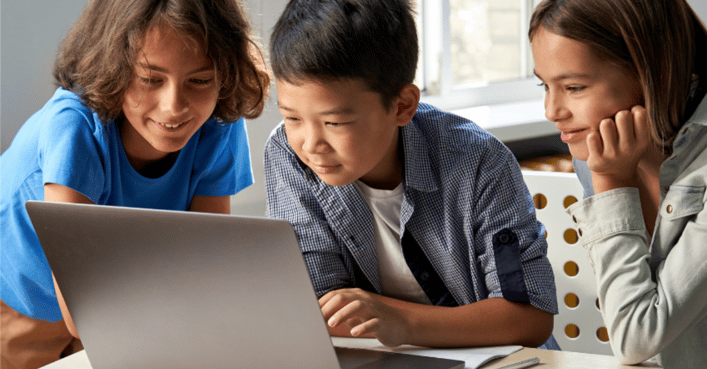
By now, people of all ages are familiar with the term “pandemic.” But“infodemic” might be unfamiliar. The World Health Organization, along with others, declared an infodemic in 2020, calling out the dangers of the mass proliferation of misinformation across news and social media platforms. On top of that, today’s students are digital natives and spend on average more than seven hours a day on screen, not including time for schoolwork. With such an influx of unreliable “news,” how can educators teach their students necessary media literacy and criticality skills that ensure their ability to assess the media they consume?
Currently, fourteen states have either passed or introduced legislation mandating media literacy education, and educators across the country are beginning to better integrate this essential topic in their instruction, often through current events. “Current events” in the classroom might be synonymous with Social Studies for some. While that may be a logical pairing, there are considerable benefits to integrating current event content to develop media literacy across subject areas.
Not sure where to begin? Read on for tips on integrating current events and building media literacy throughout the school day, and you will be on your way to developing global citizens who think critically about the media and news they consume.
3 Tips for Integrating Current Events and Media Literacy Across Subjects
- Incorporate a project-based learning unit. In collaboration with your students, start by selecting a relevant, community-facing problem. Perhaps your learners are interested in local sustainability initiatives or mitigating climate change. Maybe they want to improve mental health support for youth. When you tap into your students’ passions, you are sure to increase engagement. From there, task students with doing research to find data and facts that speak to the problem. This is where a critical eye for media bias and sources is essential. Challenge students to question their sources for reliability, bias or slant, and level of objectivity. Credible sources like NexGen News are eliminating the guesswork for students and educators, providing fact-based news that supports learners in staying informed, conducting high-quality research, and developing criticality of the media they consume. Project-based learning units can take place in any subject area, as long as you find logical connections to your content standards.
- Try a daily news share out. Each student in your class is assigned a day of the month when it will be their turn to bring a news story to share with their peers. This can happen during morning meetings, at the top of any class, or frankly whenever you like. Ensure students are clear on speaking point expectations. Perhaps your expectations for students sharing is that they summarize key points, share their source, and share the level of reliability with evidence to support. Simultaneously, assign the rest of the class to listen for opinion words or questionable facts. After the share, have the class discuss what interested them in the news story, what questions they still have, and what other sources could be helpful to cross-reference. Comparing and contrasting different sources about the same topic can clearly illustrate bias in media and the need for media literacy. Need a go-to news source for kid-appropriate content? NexGen News offers a library of news content with corresponding lessons for grades 3-5 or 6-8, including biweekly news recordings hosted by teens! Take a peek at one of their open educational resources breaking down the Russian invasion of Ukraine.
- Conduct a social media audit. Phones out in class?! Immediately, you pique kids’ interest. With nearly half of American adults reporting that they get their news from social media, it is essential that educators draw students’ attention to this source and support them in discerning what is real from what is not. Have students audit the accounts they follow for reliability and bias by cross-referencing with fact-based news sources. Bring students’ attention to fact-checking resources (like this one) and highlight those sources receiving higher “factual grades.” Coach students with these eight steps to spot “fake news.” After cross-referencing, discuss which accounts they can turn to for fact-based news versus which are strictly for entertainment.
Start Building Media Literacy in Your Students
Now more than ever, media literacy must be an intentional focus in classrooms, whether mandated by standards or not. If you and your colleagues are looking for a partner in presenting high-quality, developmentally appropriate news that challenges students to think critically, look no further than NexGen News. With written and video content, discussion questions, extension activities, and ready-made lesson plans to pair with current events content, NexGen News is an engaging, simple way to build media literacy in your students.

